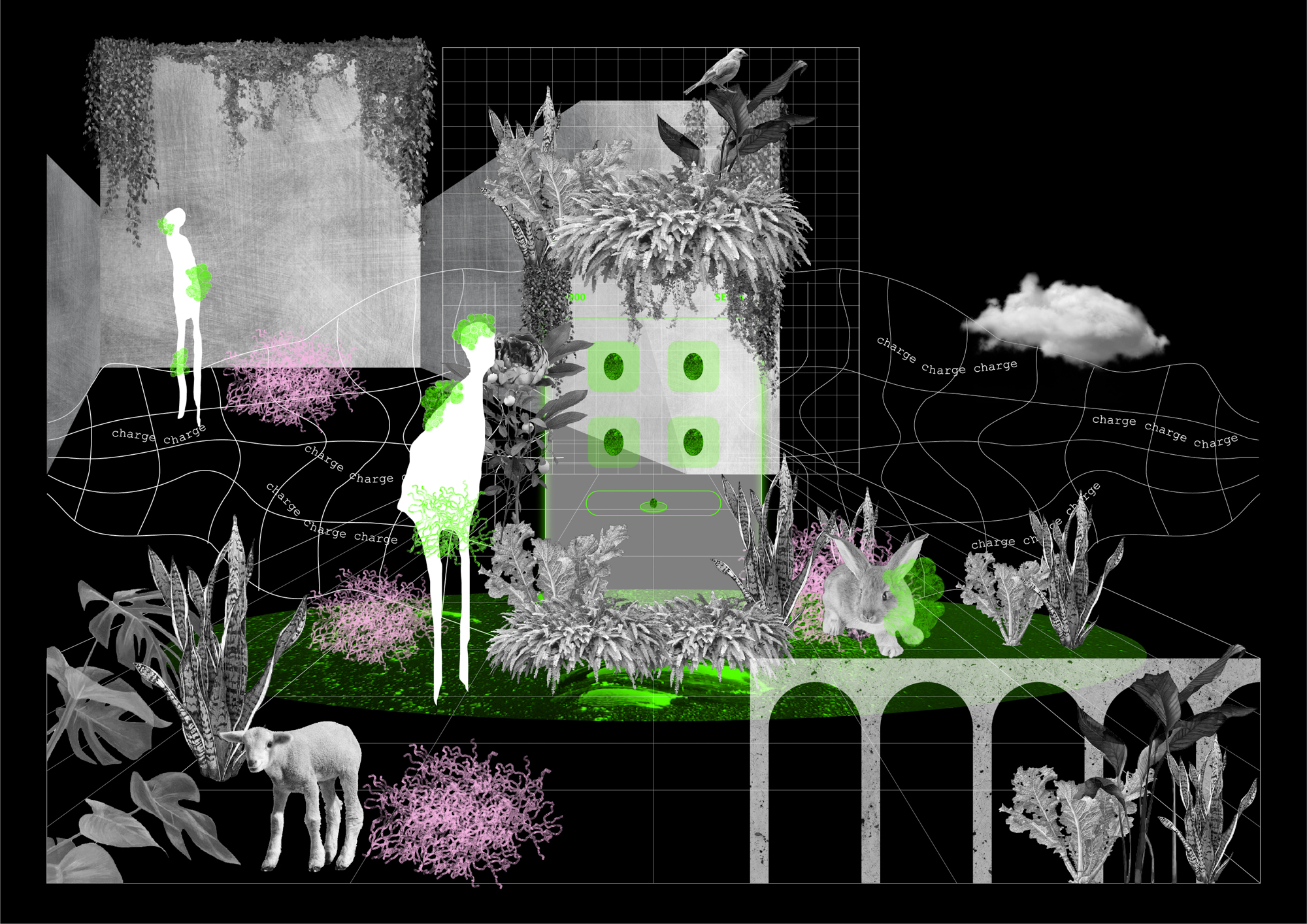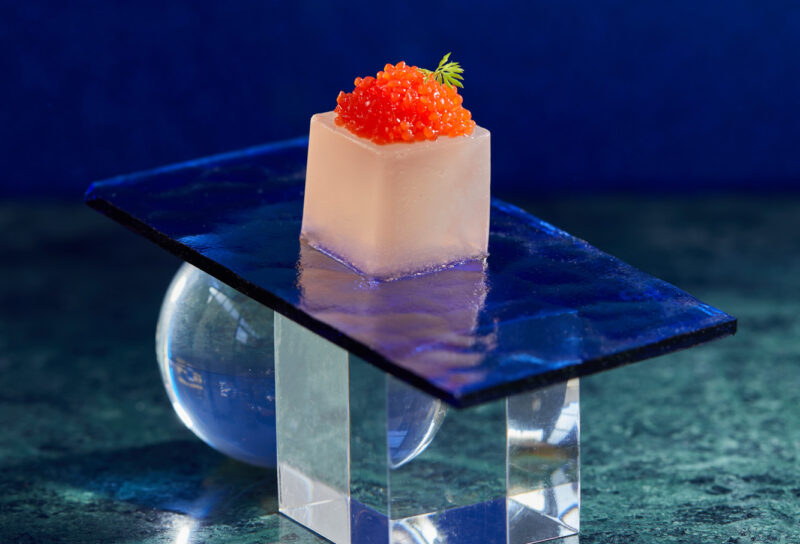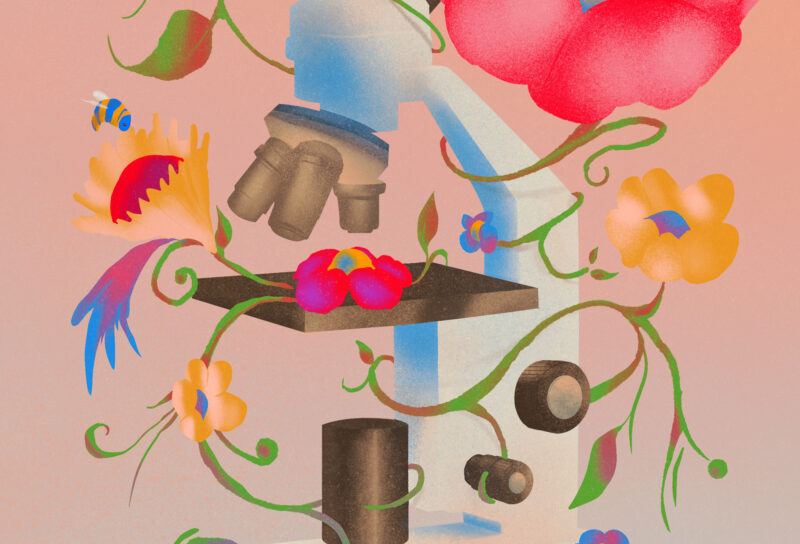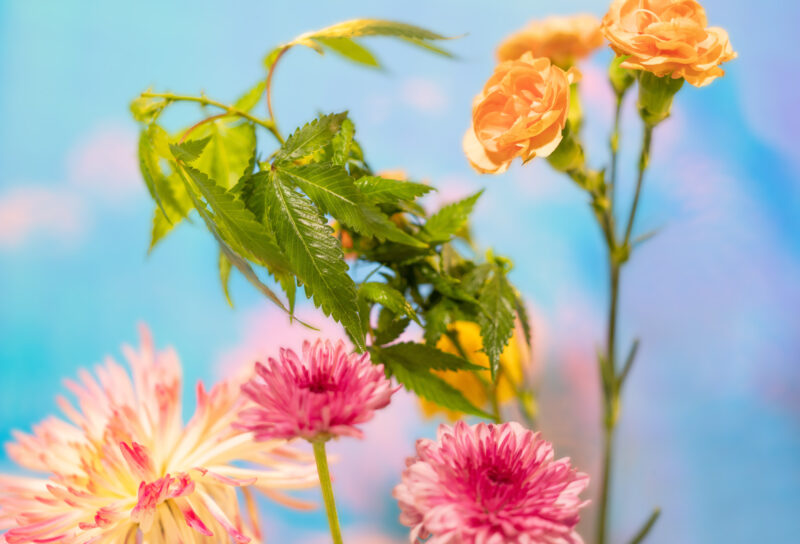At Ginkgo Bioworks, we believe that imagination has a huge role in making change happen. That’s why we sponsored the Ginkgo Prize for Biological Futures at Biodesign Challenge’s 2022 Summit, which is awarded to a team that imagines a biological design alongside the future it inhabits. Envision a world that is overcoming the challenges of climate change, environmental degradation, and inequality: What designs exist in that world and how do they incorporate synthetic biology?
The Biodesign Challenge is an interdisciplinary education program that works with students to create projects that bridge art, design, and biotechnology. Every June, the competition concludes with a week-long summit. For the winner of the Ginkgo Prize, we selected a team from Keio University that chose to reimagine a more sustainable vending machine in Japan. Here we learn more about their project, their team, and their vision for the future.
What was the rationale behind your project, Post-Anthropocentric Vending Machines in Japan?
Japan has the highest density of vending machines worldwide, with slightly over 5 million in the nation. There is approximately 1 vending machine for every 31 people and they are marked by an incredible variety, selling soft drinks, coffee, tea, cigarettes, candy, soup, hot food, sake, and beer. Unfortunately, the plastic waste generated from the vending machine is immense, contributing to the salient marine pollution problem in Japan.
For our project, we concepted a vending machine called HAKKO25 that uses microbes to produce fermented foods and power. HAKKO (発酵) is the Japanese word for fermentation and box, and we chose the number 25 as a symbol to imagine beyond the meaning of 24/7. The vending machine is a self-sufficient system that reshapes a contemporary Japanese phenomenon into a future bio-platform.
Tell us more about how the vending machine works, and the solutions you are proposing.
Our initial design of HAKKO25 uses food fermentation and microbial fuel cells to produce bioenergy. The system is conducted in two different fermentation containers, one for soybeans and one for rice. The fermentation containers are connected with the production containers, where the finished products of natto (soybeans fermented with a specific bacteria) and amazake (a drink made of fermented rice) are stored. From the production containers, the natto and amazake are poured into the consumption container. In the upper part of the fermentation container, biogas is released in separate chambers. That biogas is then extracted into the microbial fuel cells, where it is used to produce electric energy that powers the machine.
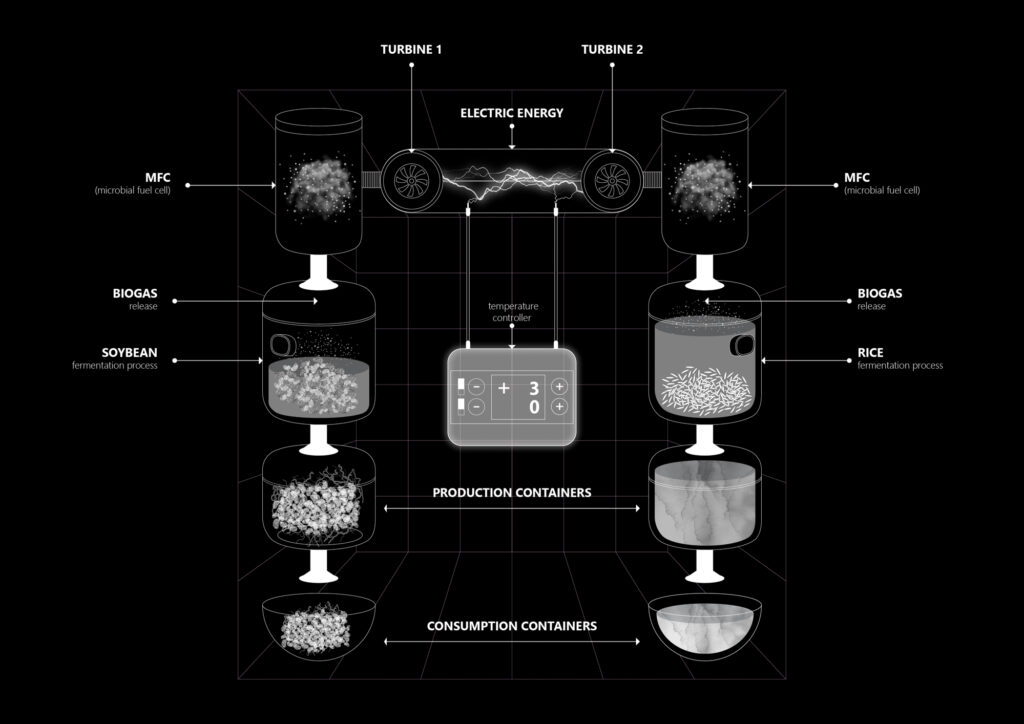
In the next five years, we aim to create a vending machine that is fully self-sustained. In this machine, rainwater, food waste, and soil are mixed to create nutrient-enriched mud. Microbes in the soil release electrons as part of their respiration, which is used to charge a battery over time. Using the organic leftovers as a soil fertilizer, the vending machine’s surroundings are overgrown with greenery, moss, and edible mushrooms, creating a tiny oasis that can offer sanctuary and food for insects and local creatures.
In 2072, as we transition from the Anthropocene to the Post-Anthropocene, HAKKO25 has long been separated from human-centered production, instead serving as an energy source for diverse living beings. Extracting energy from plant roots and mycelium, the system is enveloped with a membrane that collects human sweat through touch. The healthy microbes from the sweat are separated and combined with microorganisms that initiate plant growth to fabricate a jelly. The jelly is consumed through touch and skin by both humans and animals, and used as food and shelter for various species.
What future would the Keio team like to see?
We see a future where all energy is sustainable and genetic engineering is used to build everything, from products to buildings. There is enough solar energy on the planet to never use coal or petrochemicals. There is enough technology to replace toxic chemical processes with lab-grown and low-impact ones. There is a new world order and a new way to express and exchange value for people, plants, fungi, and animals of all sizes.
